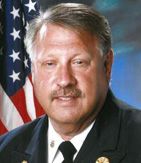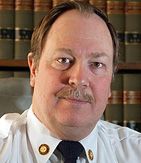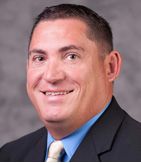In an effort to better understand not only what was important from 2016, but what those events and issues will likely mean for the coming year and beyond, we reached out to our editorial advisory board members.
Below are their short, insightful and diverse views on the year that was.
Join the conversation by including your reaction to their viewpoints or adding your own take on what made 2016 important to the fire service.
 Gary Ludwig
Gary Ludwig
The rest of the fire service was focused on active shooters in Orlando, Dallas and other cities, increased suicides by firefighters and fire officers, and what a President Trump will mean to fire and EMS delivery.
Meanwhile, on the grounds of the Illinois Fire Service Institute, a landmark study was being conducted that will shape how we go forward protecting the health of firefighters engaged in firefighting.
The interim report, called “Cardiovascular and Chemical Exposure Risks in Modern Firefighting,” has already been written. Done in conjunction with IFSI, NIOSH, UL and several colleges, the study attempts to understand the impact of what various byproducts of fire combustion has on the firefighter.
The extensive study will try to understand better what carcinogens firefighters are exposed to and what is the cardiac impact, along with any long-term risks of cancer.
The study is so comprehensive that it even measures the off-gassing of combustion byproducts from turnout gear in a crew cab and what that exposure can mean to the health of a firefighter.
I am sure when the study is complete, many recommendations will impact the fire service for years to come — including methods of sweating byproducts from your body after a fire and other methods for preventing cardiac events to a firefighter after fighting a fire.
 Phil Stittleburg
Phil Stittleburg
Undoubtedly, the recent presidential election will rank high on the list of significant events of 2016.
I imagine that we will all be trying to assess the impact for some time to come, sorting out what this change in administration heralds for things like AFG and SAFER, health care reform, restructuring the income tax system and OSHA regulations relating to mandatory firefighter physicals.
What I hope for, though, is something more all-encompassing. This election has been cruelly divisive, even to the point of being marked by post-election riots.
It now falls to us to overcome the slights and insults and once again speak with a united fire service voice. My wish is that we reject the contentious attitude reflected in the months of campaigning and move forward with a spirit of mutual respect.
 Billy Hayes
Billy Hayes
While 2016 has been an interesting year with so many events impacting the fire service, I have to speculate that two major recent incidents will have the greatest impact on the fire service as we look forward to 2017.
First, the wildland fires in the southeastern region of the United States, especially Gatlinburg, Tenn., will show that these types of incidents can occur in places other than the western region.
Fire and emergency services agencies must be ready to deal with a variety of responses. But with a changing climate and development in rural areas, preparation and training for wildland interface will become a topic of discussion in regions where it’s been said, “those don’t happen in our jurisdiction.”
Second, the Ghost Ship fire in Oakland, Calif., will force fire and emergency services, as well as code enforcement in local government agencies, to re-evaluate target hazards within their own communities. There are many lessons still to be learned throughout the investigation.
From the great loss of life in this fire, I believe we will find that prevention truly failed somewhere in the system. Major fires such as the Winecoff, Triangle Shirt Factory and Our Lady of Angels incidents had sweeping impacts on our industry. I hope this incident too will motivate agencies to enforce codes and standards at a more stringent level to protect those we serve and, of course, our own.
 Linda F. Willing
Linda F. Willing
In all my interactions in the past year with fire service leaders, one issue seems to come up in every conversation, and that is how to do much more with stable or diminishing resources. Medical calls are increasing exponentially in some areas, yet most departments are handling the greater call load with the same number of firefighters and apparatus. In some cases, they must handle the increased call load with less.
Fire departments are struggling and searching for answers. Would computer-based training be better than trying to get people together in a live format? How about some support for members regarding skills in time management and setting priorities?
Is there technology that can help in making response more efficient, or collecting and managing information? Is it the fault of the dispatch system, and if so, how can that be remedied? Do you even really understand the challenges other agencies face?
If more people lose or abandon their health insurance, as has been predicted under a new federal administration, emergency responders will feel even more pressure than they are experiencing now. How will fire departments meet this need while also meeting expectations in the community for effective all-hazards response, inspection and enforcement and public education and outreach?
In my view, this is a key challenge for the years ahead.













